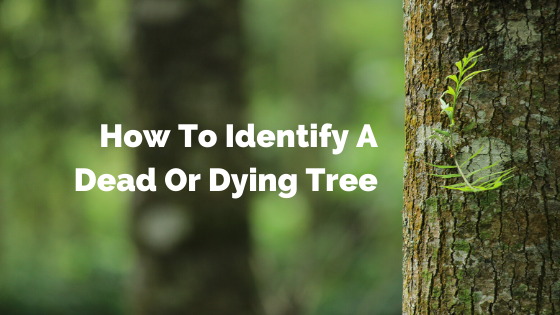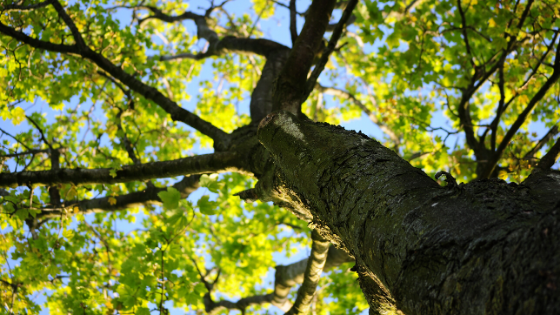News
How To Identify A Dead Tree
One of the best parts of spring is watching the seasonal deciduous trees begin to sprout with their new new green foliage. However, there may be one or two trees in your backyard or on your property that have you wondering. How do I tell if this tree is alive, dying, or dead?
What causes a tree to die?
Unfortunately, not all trees get to grow into a ripe old age. For every mature tree in a forest, there are hundreds of seedlings and saplings that don’t make it. So what are the common causes of death for most trees?
Poor or Adverse Environments
Poorly draining soils, salty soils, droughty soils, air and ground pollution, extreme sun heating or cold spots. These, and many other factors all can create terrible environments for a tree to grow in. These factors, known as ground and site conditions, ultimately determines how much environmental stress is placed on a tree.
A tree’s specific genetic tolerance to an environment is very important to consider when planting a new tree, or determining whether a not an existing tree will continue to survive in its current environment.
Generally many trees can adapt very well to different locations, but if there is a tree species planted in your yard that is new or alien to the local environment, it might be at risk.
Disease and Harmful Insects
Tip blight (or shoot blight) is a fungal disease that primarily affects pine trees, although spruce and fir trees are also susceptible. The infection begins in the needles, moves upward into the branches’ tips, and weakens the tree in the process. This lowers the tree’s resistance, leaving it open to attack from other diseases and pests.
Other diseases such as armillaria root rot, oak wilt, and anthracnose are most common. These diseases are pathogens which invade through the bark, leaves, roots, and bark wounds of a tree.
Insects can not only directly cause tree death, but they can also spread harmful diseases from tree to tree. The emerald ash borer is a green beetle native to north-eastern Asia. Females lay eggs in bark crevices on ash trees, and larvae feed underneath the bark of ash trees. An invasive species, this insect is highly destructive to ash trees throughout Europe and North America.
Environmental Disasters and Events
This one is rather obvious. A forest fire, flash flood, or even a windstorm will certainly shorten the lifespan of a tree if given the opportunity. Heavy winter ice buildup can also place stress on trees, breaking branches and leaving them exposed to other elements such as insects and diseases.
What are the symptoms of a dying tree?
While there are many signs of a dying tree, here are a few that you might be able able to spot and identify on your own.
Vertical cracks or seams in a tree’s trunk are generally a bad sign.
Areas where bark has fallen off, and instead of growing back, it has become smooth.
If the tree is leaning, or has bare branches on one side, may be suffering from root damage.
If you notice trees with dead leaves clinging to their branches throughout the winter
Tests to identify if a tree is dead.
Before calling your local tree service company, there are a few visual signs that will help you out as well as some tests you can perform yourself.
Tree Trunk Damage
Give the trunk a good visual inspection. Identify any cracks or exposed and smooth surface areas that we mentioned above. Trunks with severe damage increases the likelihood that it may be dead.
Evidence of Fungus
Do you see fungus growing around the base of the tree? Typically, this is a initial sign that the tree may be in fact dead. Fungus on the trunk usually means that the tree’s internal trunk is actually rotted out, signaling that the only living thing in this situation is the fungus itself.
The Scratch & Break Test
A scratch test is a easy way that you can tell the health of a tree yourself. Simply use a small knife to scratch or mark the outside of a tree’s branches. A healthy tree should show lots of green color, and be relatively moist. Do this test on a few different spots on the tree. A break test works the same way, however instead of cutting open the tree, you are breaking small branches to check the condition of the insides of the branch.
Why are dead trees an issue?
Most importantly, it could be a safety risk for you, your family, or others in your community. Trees have limited lifespans, and need more maintenance than we sometimes want to accept. A dead tree could suddenly come down on top of a house or over a play area, which is why its important to properly identify if a tree is dead and removal of the tree is needed.
Additional reasons why you would want to remove a dead or dying tree include preventing the spread of disease (leading to more dead trees) or discouraging unwanted insects or pests. Termites and rats are pests that often find refuge in a dead tree, and if it is in close proximity to a house, they may find themselves where they don’t belong.
Determining if a tree should be removed.
Generally, we recommend removing a dead tree if the following factors are present.
50% or more of the tree is damaged.
The tree is located near hazardous or harmful areas, such as telephone poles, electrical lines, or areas that are commonly enjoyed by people or pets.
Removing the exiting tree would benefit other trees or plants in the area. Preventing the spread of disease is important, and the removal of a dying tree can give other healthy plants a chance to thrive.
We hope that you found this article on identifying dead or dying trees helpful. If you are still unsure about the health of a tree on your property, our certified arborists would be happy to answer your questions and take a look.
Want to learn more about tree heath? Consider these other great posts:
Dealing With Maple Seedlings Everywhere? Here’s What To Do
Why You Should Not Remove a Tree With a Giant Bulldozer



